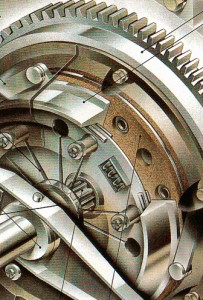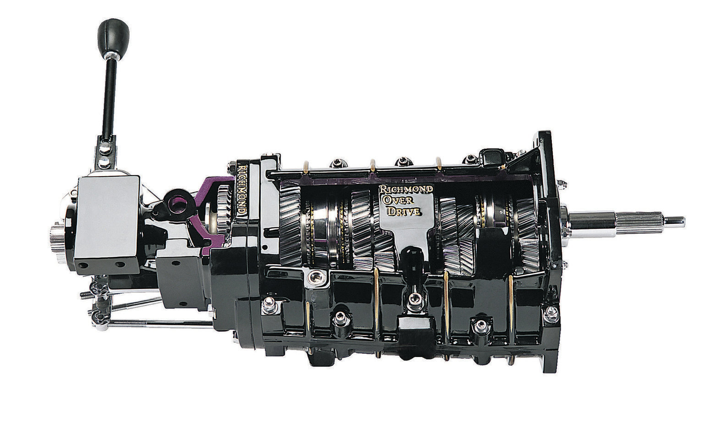 The clutch assembly on a car with a manual transmission is located between the engine and the transmission and serves as a means to disconnect the transmission from the engine. If the car had no clutch the transmission would always be turning at the same speed as the engine and the engine would stall when the car came to a stop.
The clutch assembly on a car with a manual transmission is located between the engine and the transmission and serves as a means to disconnect the transmission from the engine. If the car had no clutch the transmission would always be turning at the same speed as the engine and the engine would stall when the car came to a stop.
The clutch assembly consists of three basic parts; the flywheel, the pressure plate and the clutch disc. The flywheel is part of the engine and is the driving member of the clutch assembly. The pressure plate is attached to the flywheel and uses spring pressure to hold the clutch disc against the flywheel. The clutch disc is attached to the transmission and transmits the rotary montion of the engine to the transmission and ultimately the wheels. The clutch disc is held in firm contact with the flywheel by springs in the pressure plate. Depressing the clutch pedal operates a linkage that releases the pressure holding the clutch to the flywheel and allows them to rotate freely of each other. The linkage connecting the clutch pedal to the clutch can be either mechanical or hydraulic.
Slipping:
The clutch disc has friction material on both sides. The friction material is similar to that used for brake linings. When to friction material is worn the result is slipping. Slipping can also be caused by friction material that is soaked with oil, a warped pressure plate or by weak springs. To check for slipping park the car, apply the the parking brake and disengage the clutch. Shift the transmission into third gear, rev the engine. Release the clutch pedal slowly until the clutch engages. If the engine does not stall within a few seconds, this is a sign of slipping.
Chatter
Chatter is shaking or shuddering that is felt when the clutch is engaged. Chattering is evident while the clutch is being engaged and stops when the clutch is fully engaged. Clutch chatter is usually caused by contamination of the clutch disc friction surfaces. Contamination can be caused by oil or hydraulic fluid leaking onto the clutch disc. Chatter can also be caused by loose bell housing bolts, broken engine mounts, and a damaged clutch linkage. You can check for clutch chatter by starting the engine, depressing the clutch completely, and shifting the transmission into first gear. Rev the engine and then slowly release the clutch pedal to check for chatter as soon as the pedal begins to engage. Do not release the pedal completely, and, depress the clutch pedal immediately and reduce engine speed or you could damage the clutch parts.
Drag
Clutch drag is when the clutch disc is not completely released when the clutch pedal is fully depressed. To check for clutch drag; with the engine running depress the clutch pedal completely, and shift the transmission into first gear. Without releasing the clutch shift the transmission into neutral, wait 5 seconds and attempt to shift smoothly into reverse. If shifting into reverse after waitng 5 seconds causes grinding of gears clutch drag is a possible culprit.
This is not an exhaustive list of clutch problems but only the most common ones. All sorts of noises and vibrations can be caused by clutch problems. Also, some cars such as the Kia Forte are prone to have clutch problems. If you suspect that you have clutch problems bring your car to Hi-Tech Car Care and we will give it a check up.
No matter what problem you are having with your car, you can be sure that we will fix it right at Hi-Tech Car Care. We have the equipment and expertise to diagnose and repair any problem.






Join the discussion 6 Comments